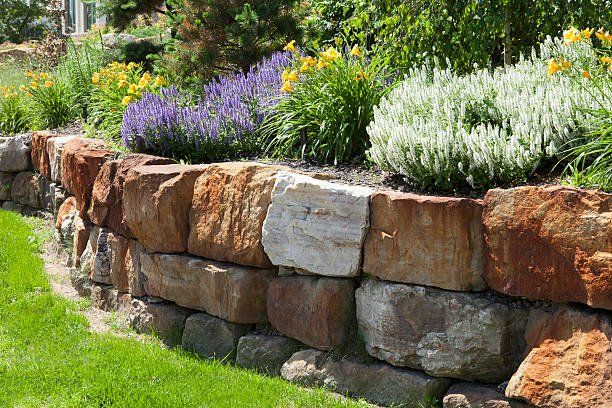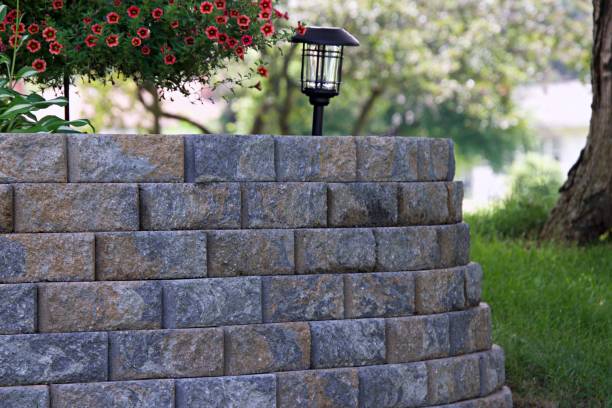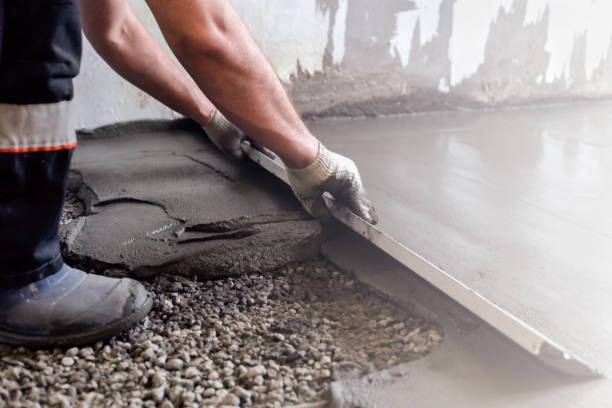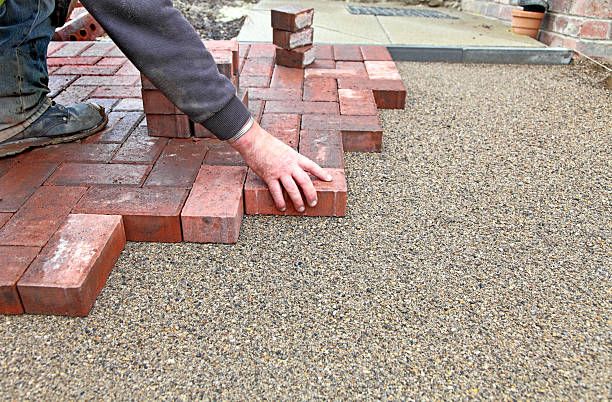
The Complete Guide to Installing a Retaining Wall Service: Everything You Need to Know
Looking to install a retaining wall service on your property? You're in luck! This guide by Masonry Construction Pros will walk you through everything you need to know about the installation process. We'll cover topics such as choosing the right type of retaining wall, preparing the ground for installation, and more. Plus, we'll provide tips on how to maintain your new retaining wall service so it lasts for years to come. Let's get started!
What is a retaining wall construction and what are its purposes?

A retaining wall is a wall built to support soil on one side while resisting lateral pressure from the soil behind it. It is used to create level terraces in sloped landscapes and can be constructed from a variety of materials, including wood, natural stone, and concrete. In addition to stabilizing soil, retaining walls can also be used to create visual interest in the landscape and can be planted with a variety of climbers and creepers to add color and texture. Whether functional or decorative, retaining walls are an important part of many landscapes.
Different types of retaining walls
A wall is only as good as its foundation. The same can be said of retaining walls, which are designed to hold back soil, sand, or water. There are many types of retaining walls, each with its own strengths and weaknesses. For example, a gravity wall relies on its weight to keep it in place, while a cantilevered wall uses tension to stay upright. In terms of materials, common choices include concrete, stone, and wood. Ultimately, the best type of retaining wall for a particular application will depend on a variety of factors, including the amount of weight that needs to be supported and the height of the wall. With so many options to choose from, it's important to consult with an expert before deciding on a retaining wall for your property.
The benefits of hiring a contractor for your retaining wall project
Hiring a contractor for your retaining wall project has several benefits. Firstly, contractors have the experience and expertise to get the job done quickly and efficiently. Secondly, they have access to the latest tools and equipment, which can help to reduce the overall cost of the project. Finally, contracting firms often offer guarantees or warranty periods, which can give you peace of mind in case of any problems. While it is possible to complete a retaining wall project without hiring a contractor, doing so will probably take longer and cost more in the long run. Therefore, if you're looking for a quick, efficient, and cost-effective solution, hiring a contractor is the way to go.
Things to consider when choosing retaining wall contractors
When you're ready to take on a home improvement project, the first step is finding a qualified contractor. But with so many choices out there, it can be hard to know where to start. Here are a few things to keep in mind when choosing a contractor:
- Licensing and insurance: Make sure the contractor is licensed and insured in your state. This will protect you in case of any accidents or damage during the project.
- Experience: Look for a contractor with experience in the type of project you're undertaking. They'll be better equipped to handle any challenges that come up.
- Reputation: Check out online reviews and talk to others who have used the contractor's services. You want to make sure they're reliable and deliver on their promises.
- Cost: Get quotes from several contractors before making a decision. Be sure to compare apples to apples, though, so you're comparing similar services.
Taking the time to find the right contractor will pay off in the end, so don't rush into a decision. With a little research, you'll be able to find someone who will help you turn your vision into reality.
How to find qualified contractors in your area
- Start by asking for recommendations from friends, family, and neighbors. If they've had a good experience with a contractor, they'll be happy to pass along the information.
- You can also search online for contractors in your area. Just be sure to read reviews carefully before making a decision.
- Once you've compiled a list of potential candidates, you can narrow it down by calling each one and asking for a quote. This will give you a better idea of who is within your budget and what they're offering.
- Finally, schedule a consultation with each contractor on your shortlist. This will give you an opportunity to ask questions and get to know them better. After meeting with all the contractors, you'll be able to make an informed decision about whom to hire.
Taking the time to find a qualified contractor will pay off in the end. With a little research, you'll be able to find someone who can help you turn your vision into reality.

The cost of retaining wall services
The cost of retaining wall services can vary depending on the size and type of wall you need. The most common type of retaining wall is a concrete block wall, which typically costs between $8 and $10 per square foot. If you need a more specialized type of wall, such as a stone or brick wall, the cost will be higher. In general, it is best to get quotes from multiple companies before choosing a retaining wall service provider. This will ensure that you get the best possible price for the job.
Installation tips for a successful retaining wall project
Retaining walls is a great way to add visual interest and functionality to your landscape. But before you get started on your next project, there are a few things you should keep in mind. First, make sure to choose the right materials. Brick, stone, and concrete are all popular choices, but they each have their own strengths and weaknesses. Second, consider the purpose of the wall. Are you trying to create a drainage system? Provide support for a slope? Block out unwanted noise? Once you know what you want the wall to do, you can start planning your design. Finally, don't forget about the little details. Make sure your foundation is level and that your drainage system is properly installed. With a little careful planning, you can create a beautiful and functional retaining wall that will last for years to come.
You might also like



Book a Service Today
We will get back to you as soon as possible
Please try again later
Masonry Construction Pros Lic #1116176
License # 1116176
In partnership with Paradise Gardens Landscaping LLC
We're available
- Sat - Fri
- -
Tell Us About Your Project
We will get back to you as soon as possible.
Please try again later.
Designed by Splash Media Marketing
*This is a referral website. Services fulfilled by licensed contractors.
